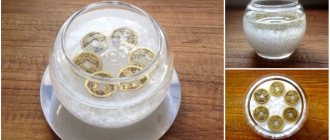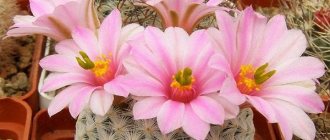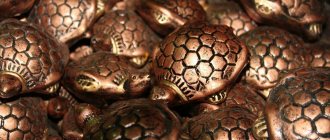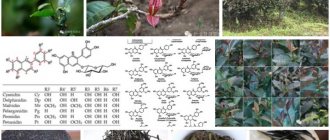Biological plant protection
Of course, progress does not stand still; with the increase in the diversity of food crops and the expansion of cultivated areas, chemical and biological laboratories have begun to be created that are developing new methods of plant protection to increase yields.
Since the second half of the 19th century, chemical crop protection products have been actively used, which has tripled yields. Biological plant protection relies primarily on the use of living organisms, as well as drugs with a bacterial component, in the fight against harmful objects. Today there are three main methods of biological protection:
- this is the introduction into the soil of beneficial microorganisms that perform the function of orderlies in the fight against harmful infections and viruses, an example is the drug trichoflor, a biofungicide, phytosporin.
- This is spraying plants during the growing season with biological preparations; you can use the drug biolarvicide or trichodermin.
- and finally, this is the attraction of “beneficial insects” to the site, such as the ladybug (which is capable of destroying a whole horde of aphids), ground beetles, lacewings, amblyseus, trichogramma, encarsia and other ethnomophages, as well as birds, but only if We are not talking about fruit and berry lands.
You should not ignore microorganisms, which are the worst enemies of ticks and insects in the natural environment. The most common of them are pathogens of insect diseases of bacterial origin. Fungal and viral microorganisms cause rapid death of the insect.
The drug entobacterin, which is based on crystal-forming bacteria, which, when entering the body of an insect, paralyzes it and kills it, has become widespread.
Another biological preparation is dendrobacillin; its main component is a microorganism taken from silkworm caterpillars; the product allows you to fight many types of pests in the garden.
Dangerous for insects, but harmless to humans, mushrooms of the genus Boveria bassiana are pathogenic fungi that kill most lepidoptera, coleoptera, membranous and other insects. When the microorganism enters the intestines of an insect, it causes the disease “white muscardinosis”, followed by death.
Viruses can also be considered natural enemies of insects. A group of parasitic cells, penetrating into a host, causes its death; a distinctive feature of bacteriological protection in the form of a virus is its narrow focus and safety for warm-blooded animals. In our country, the use of codling moth granulosis virus is permitted, this is the biological product Fermo-Virin and Cydia pomonella, a granulovirus contained in the Madex Twin suspension.
In biological pest control, a well-proven method of combining efforts in the form of agrotechnical measures together with preparations of biological origin. For example, fertilizing with phosphorus-potassium fertilizers significantly reduces the population of cabbage whites.
And the use of biological preparations such as gliocladin, which is based on the fungus Trichoderma harziannum, will help get rid of root rot of the plant. Compliance with crop rotation on arable land and good neighborliness of plants in personal plots also leads to a decrease in the number of pathogenic bacteria and harmful insects.
Biological protection implies not only a barrier against harmful insects, but also rodents. To protect fruit and berry crops, as well as young green spaces, another biological method of protection is used, based on infection of large pests by pathogenic microorganisms. In practice, preparations containing Salmonella bacteria, as well as bacterial rodenticides, are used. The latter are a grain mass containing rat typhus bacteria, which, when eaten, causes the death of the rodent within 3-5 days.
Chemical and biological plant protection is an important tool in the fight against pests and diseases, without which agricultural crops are doomed to death. Therefore, it is so important to apply biological protection methods in practice in a timely manner.
Biological plant protection has proven itself to be a safe way to get rid of pests, but it depends on many abiotic factors beyond human control. Sometimes, the use of safe methods does not bring the desired result, and then chemical methods of plant protection come to the rescue.
The principle of action of biological products
Insecticidal and acaricidal biological products based on bacteria and viruses begin to act from the moment a pest, be it an insect or a tick, enters the body with food. After a few days, the infected pest dies from toxicosis or multiplied bacteria.
Moreover, unlike pesticides, biological products can be used even a few days before harvesting. They do not accumulate in plant tissues and do not pose a risk to human health and beneficial insects, such as bees.
Biological plant protection products should be used at an air temperature of at least 10°C. Cooler weather inhibits the activity of beneficial microorganisms, which reduces the effectiveness of drugs.
Among bioinsecticides there are preparations of both internal and external action that protect plant roots and destroy soil pests. To do this, it is enough to treat the root system of seedlings or planting material with a solution (suspension) before planting.
Fungicidal biological products promote the production of substances that destroy the causative agents of most plant diseases, suppress the development of pathogenic microflora, thereby healing the soil.
Today, garden stores offer a huge variety of biological plant protection products. It’s time to get confused when choosing them. Therefore, we have selected 7 of the most popular drugs for you. Some of them may have different manufacturers, but the principle of action and composition are the same.
Alirin-B
The biological preparation Alirin-B is intended to combat pathogens of bacterial infections on garden crops and indoor plants. It successfully fights root and gray rot, powdery mildew and tracheomycosis wilt, alternaria and late blight, rust and scab, cercospora and other diseases.
In addition, Alirin-B restores soil microflora, increases the level of protein and ascorbic acid in fruits, and reduces the content of nitrates.
The drug protects potatoes, tomatoes, cucumbers, green crops, as well as apple trees, black currants, gooseberries and strawberries. It is used to treat potato tubers before planting, spray the plants during the growing season and water the solution at the root.
- Alirin-B – instructions for use, fungicide action. Safety measures for Alirin-B, compatibility.
Baikal EM1
The drug with effective microorganisms Baikal EM1 is also called “live” fertilizer. It contains specially selected soil microorganisms that have a beneficial effect on soil fertility, on the growth and development of plants, increasing their immunity.
Baikal EM1 is used for treating seeds and planting material, spraying seedlings and indoor plants, foliar and root treatment of crops. The drug is also used when preparing the soil for planting, and also as an accelerator for the composting of plant residues.
In addition, the EM drug reduces the growth of pathogenic microflora in the soil and makes the nutrients in it more accessible for absorption by plants.
- Baikal EM1 – instructions for use, effect of fertilizer. Safety measures for Baikal EM1, compatibility
Lepidocide
Biological insecticide Lepidocide effectively fights the caterpillars of most harmful lepidopteran insects: moths, cabbage moths, codling moths, leaf rollers, moths, etc. It is widely used to protect forest, agricultural and park crops from pests.
The endotoxins included in the drug damage the inner lining of the caterpillar's intestines, which is why the insect stops feeding and dies within 3-7 days. Plants are sprayed with Lepidocide solution during the growing season against each generation of voracious larvae of pest butterflies.
- Lepidocide - instructions for use, action of the insecticide. Safety measures for Lepidocid, compatibility.
Sporobacterin
The biological fungicide Sporobacterin provides the prevention and treatment of fungal and bacterial plant diseases such as powdery mildew, late blight, root rot, bacterial spotting, mildew, scab, rhizoctonia, etc.
One treatment with this drug replaces two treatments with chemical fungicides. It can be used from early spring to late autumn. Sporobacterin is effective when soaking planting material: seeds, tubers, bulbs.
For preventive purposes, it is also sprayed on plants during the growing season, the lawn and the soil surface. To enhance the effect of the drug, the soil must be constantly loosened.
- Sporobacterin - instructions for use, fungicide action. Safety measures for Sporobacterin, compatibility.
Fitoverm
The list of pests against which such a biological insectoacaricide as Fitoverm is used is quite wide. This is the only anti-spider mite drug that can be used on indoor plants.
It is designed to combat most leaf-eating and sucking pests: mites, aphids, thrips, caterpillars on vegetables, berry bushes and fruit trees, and also, of course, on “green pets” from the home greenhouse.
Plants are sprayed with a solution of the drug as the pest appears. The insect dies within three days from exhaustion, because... The active ingredient of the drug Aversectin C, entering the intestinal tract, paralyzes the victim.
- Fitoverm - instructions for use, action of the insecticide. Safety measures for Fitoverm, compatibility.
Fitosporin-M
A biological fungicide such as Fitosporin-M is effective against many dangerous plant diseases. It is used to prevent and treat in the initial stages of late blight and septoria, scab and root rot, fusarium wilt and blackleg, powdery mildew, etc.
Seeds, tubers and bulbs are soaked in a solution of Fitosporin-M before planting. It is used to treat cuttings and disinfect the soil before sowing or planting crops. The drug increases the immunity of plants and helps them recover from illness.
Thanks to the biofungicide, seeds germinate faster, plants sprout together and develop quickly.
- Fitosporin-M - instructions for use, fungicide action. Safety measures for Fitosporin-M, compatibility.
Epin-Extra
Epin-Extra is a broad-spectrum biological product. It is used as a plant growth stimulator and immunomodulator. Under its influence, crops develop better and resist unfavorable environmental conditions: frost, excess humidity, pests and infections.
Seeds and planting material are also soaked in the drug solution. Spraying seedlings with it after transplanting into the ground relieves their stress state, and treating crops with it during the growing season helps to increase their productivity.
In addition, Epin-Extra helps remove heavy metal salts, radionuclides and nitrates from plant tissues and their fruits.
- Epin Extra - instructions for use, effect of the drug. Safety measures for Epin Extra, compatibility.
The use of biological products for plant protection is one of the steps towards organic farming, which will provide you with safe and healthy vegetables and fruits.
Login to the site
Legends of the poppy. The poppy is a mythopoetic image - a sign of sleep and death, and a blooming one - of unprecedented beauty, also a symbol of unfading youth and feminine charm. The symbol of the Great Mother, meaning the Virgin Mother, night. Dedicated to all lunar and night deities. Symbolizes fertility, fertility, oblivion, idleness. China: retirement, relaxation, beauty, success; however, as a source of opium - decay and evil. Christianity: sleep, ignorance, indifference. The blood-red poppy represents the suffering of Christ and the dream of death. Greco-Roman tradition: period of sleep and death of the plant world, emblem of Demeter (Ceres), Persephone, Venus, Hypnos and Morpheus.
There are several legends and myths associated with the appearance of the poppy. When the Lord created the earth, animals and plants, everyone was happy except Night. No matter how hard she tried to dispel her deep darkness with the help of stars and glowing bugs, she hid too many of the beauties of nature, thereby pushing everyone away from her. Then the Lord created Sleep, dreams and daydreams, and together with the Night they became welcome guests. Over time, passions awoke in people, one of the people even planned to kill his brother. The dream wanted to stop him, but the man's sins prevented him from approaching. Then Sleep, in anger, stuck his magic rod into the ground, and Night breathed life into it. The rod took root, turned green and, retaining its sleep-inducing power, turned into a poppy.
The poppy served as a symbol of fertility due to its great fertility. Therefore, it is a permanent attribute of Hera (Juno) - the goddess of fertility and marriage. The temple and statue of the goddess of fertility and marriage - Hera (Juno) on the island of Samos were decorated with poppy heads. The goddess of the harvest, Ceres (Demitra), was always depicted with a poppy in her hand. Wreaths were woven from poppy flowers and ears of grain to decorate her statues. Often the goddess herself was called Mecona (from the Greek mecon, makon - poppy).
The ancient Greeks believed that this flower was created by the god of sleep Hypnos for Demeter when she was so tired in search of her missing daughter Persephone, who was stolen by Hades, the lord of the underworld of the dead, that she could no longer ensure the growth of bread. Then Hypnos gave her poppy seeds so that she could fall asleep and rest.
Persephone was sometimes depicted with a poppy - she was imagined entwined with garlands of poppy flowers - as a symbol of the peace descending to the earth at this time. According to ancient Roman legend, he grew from the tears of Venus, which she shed upon learning of the death of the beautiful young man Adonis. According to Buddhist legend, poppies grew on the ground that was touched by the eyelashes of the sleeping Buddha.
The poppy is called “blind strike” because the bright red color of the poppy is blinding, and “weak head” because. the smell of its flowers gives me a headache. This flower is an attribute of Hypnos. He was depicted as a lying or sitting youth or angel with lowered wings, carrying poppy heads in his hands, sometimes with a wreath of poppy heads on his head.
Chemical remedies, pros and cons
As already mentioned, the chemical method of combating a harmful threat has proven to be the most effective; its advantages include:
- High efficiency, both biologically and economically.
- A wide range of chemicals that can cope with your problem without difficulty.
- Reliability and maximum efficiency of application, the speed of action of chemicals is especially important when there is a rapid and massive increase in the pest population.
- The convenience of using chemicals is due to their shelf life and trouble-free storage.
- Low drug consumption rate.
Due to the high reliability of chemicals and their effectiveness, they have found their niche in many countries around the world. The costs of purchasing and using chemicals are more than recouped by a high percentage of crop yields. However, chemical protection products are not without their drawbacks:
- This is toxicity of varying degrees, not only for beneficial microorganisms living in the soil, but also for humans.
- This is a stable circulation in the biosphere.
- This is contamination of nearby lands and arable lands with decay products of pesticides.
Methods of using chemical plant protection products
- Pre-sowing preparation of the material involves treating the seeds with pesticides.
- One of the main methods is spraying contaminated areas and crops. When spraying, it is possible to combine effective drugs and achieve one hundred percent results. In addition, when spraying the treated area, the smallest amount of the drug can cause harm to the neighboring area.
- Chemicals can be applied to the soil in the form of granules, prepared liquids, and powder.
- Chemical protection through pollination has proven itself well on large sown areas, but is inferior to spraying in accuracy and high consumption of the drug.
- For contaminated premises, fumigation is used; this is an effective method of disinfecting objects, based on chemicals in the form of gas.
- Treated baits with drugs with destructive chemical activity are also one of the methods of chemical protection.
Ancient beliefs
The ancient Slavs compared poppy flowers with the dawn and believed that poppy seeds could protect against evil spirits. Since ancient times, poppy seeds have been sprinkled near the barn and at the threshold of the house to create a barrier to evil spirits.
According to legends, until the devil or other evil spirits collect all the scattered poppy seeds, they will not be able to move further and, accordingly, cause harm.
In Rus', poppy heads are illuminated on August 14, on the First Spas, which is also called Honey and Poppy.
In everyday magic, love was strengthened with the help of poppies. To do this, it was necessary to collect poppy seeds on the growing Moon, and not in a bag, but in a handful of the right hand. That same evening the dough was to be kneaded and three poppy seed buns were baked. They had to stay in the house until morning. The next day, you were supposed to eat one bun yourself, treat your chosen one with the second bun, and eat the third in half with him. After this, your betrothed will love you for the rest of his life.
Classification of chemical plant protection products
There are several different classifications of pesticides. Among them, one can distinguish a classification by chemical composition, by the nature of action and methods of penetration, and by objects of application.
Based on the chemical composition of plant protection products against pests and diseases, three main groups can be distinguished:
- inorganic compounds - compounds of fluorine, mercury, barium, copper, arsenic, sulfur, boron, etc.
- organic compounds;
- biogenic origin - created from fungi, bacteria, viruses, plants or their metabolic products (pyrethrins, antibiotics).
Based on the nature of their action, pesticides are divided into:
- contact – the harmful object dies upon contact with the drug;
- systemic - affecting the conducting system of plants, as a result of which the object dies when feeding on such a plant.
The most common classification among summer residents by objects of use:
- insecticides - drugs used to control insect pests, as well as to destroy their eggs and larvae;
- acaricides - preparations to combat ticks;
- nematicides - against nematodes;
- rodenticides - used to kill rodents, mice, rats;
- fungicides (antiseptics) - drugs that destroy fungal pathogens;
- antibiotics (antiseptics, bactericides) - drugs that destroy bacterial pathogens;
- herbicides - means to suppress the growth and destruction of weeds;
- arboricides - against weedy woody vegetation.
These concepts are often found in recommendations for planting and caring for plants in the garden. Preparations and plant protection products against pests and diseases are available in different forms. These can be powders for pollination, powders that must be diluted with water before use, solutions, concentrates and other forms. Depending on the form of release, the preparations are sprayed, pollinated, treated, or treated with plants or soil.
Today, on the shelves of agricultural stores you can find products labeled “organic”. They belong to biological plant protection products, since such products do not contain toxic components. Gardeners and gardeners quite successfully use baking soda, laundry soap or wine vinegar mixed with water as natural biological fungicides.
Choosing the form of pesticides as a means of optimal chemical plant protection
The form of a chemical preparation (pesticide) becomes important in the fight against harmful objects. The form of the preparation and its storage conditions determine how closely the pesticide comes into contact with the pest.
Due to the high toxicity and danger of interaction of the drug with the environment, they are being improved. In our time, there has been a significant reduction in the use of traditional dusts. In their place came forms of wet powders, granules and concentrated liquids.
Working solutions of pesticides have proven themselves quite well in the fight against unnecessary weeds, the activity of the substance lasts up to 2 weeks and a hundred percent result in the death of the weed is achieved by destroying the root system.
Granular preparations are good because they are small in size and highly effective against insects and microorganisms. Evenly covering the area, the granule releases the active substance at the root system of the plant, is not carried by the wind and does not harm surrounding plants, acting accurately and reliably.
Powdered pesticides are difficult to bring to the final product on your own, so this form of chemical preparation is in demand only at large agro-industrial enterprises. The success of the operation to destroy harmful objects depends on the correct choice of pesticide form.
As mentioned, pesticides are very toxic. Therefore, there are a number of rules that must be observed without fail, so as not to harm the environment. Work with chemicals must be carried out in a strictly designated area, using means that create a barrier between humans and the chemical.
The time interval for working with pesticides should not exceed more than an hour. To prevent skin allergic reactions, lubricate your hands with special creams with antihistamine and protective effects. The following are not allowed to work with chemicals: young people under the age of majority, women of childbearing age, as well as persons with problematic health.
Before starting to work with pesticides, you need to undergo a brief briefing, a medical examination and put on a chemical protective suit. After finishing working with chemicals, you must wash your hands with soap and take a shower. If there is a possibility of the drug entering the respiratory tract, it is necessary to clear the nasal passage, take an absorbent and consult a doctor.
Related Posts
- Soil conservation: main causes of degradation and land reclamation methods
- Cotton: types and characteristics of cultivation
- Dill: features of planting and growing
- Mulching beds: advantages and disadvantages
- Rye: varieties, features and prospects for growing
- Rapeseed: types and cultivation technology
Poppy tattoo meaning
In the culture of tattoos, poppies reflect a true desire for one's goal. It intertwines the meanings of many cultures and generations. The plant has autonomous branches of symbolism for men and women. The position on the body does not particularly affect the interpretation.
Poppy tattoo meaning:
- true treasure;
- grain of truth;
- the kingdom of inner harmony;
- youth;
- self-development;
- spiritual strength;
- beauty and health;
- Charm;
- wealth of spirit.
Among the North American Indians, the red flower was a symbol of absolute freedom and independence. In the language of bikers, poppies wrapping their stems around a cross, gravestone or steering wheel mean memory without sorrow. The sign emphasizes the exceptional significance of the event.
Poppy is a flexible image, you can interpret it to suit yourself. For example, scarlet flowers can be a sign of realizing your potential. They emphasize a person's high position in society or indicate a desire to forget something.
Among the Romans, poppies signified victory and triumph. In the East, the flower emphasizes the contemplation of one’s existence in meditation. From it came the meaning formed by the hippies. In their Maki culture, it is about peace, tranquility and finding a way without fighting.
The meaning of poppy tattoos for men and women
The poppy tattoo has a clear difference in symbolism on the skin of men and women. For girls, a poppy tattoo carries the meaning of relaxation and fullness of joy from life. The drawing interweaves a sense of female attractiveness and the discovery of one’s potential.
The meaning of a poppy tattoo for girls:
- sexuality;
- attractiveness;
- youth;
- playfulness;
- comfort and happiness;
- search for love;
- finding happiness in relationships;
- the power of joy.
Poppy tattoo with inscription, photo from: https://www.instagram.com/p/BiZymJXHhSV/?utm_source=ig_web_copy_link
Sensual meaning is not alien to men's poppy tattoos. For men, the tattoo is filled with the energy of success, strength and victory. There is something mystical about it. For many men, poppy has the ability to attract good luck and success. Gradually, this symbol becomes an anchor for consciousness, allowing you not to forget who you really are.
The meaning of poppy tattoo for men:
- pure consciousness;
- victory over reality;
- patronage of Fortune;
- life in full manifestations;
- happiness joy;
- achieving a cherished goal;
- willpower, focus;
- true vision of the state of affairs.
The drawing combines simplicity of lines and shapes. The head of the flower is painted red, symbolizing the energy of fire and the sun. For men, this is a symbol of ascent and blossoming potential.
Insecticides
Insecticides are chemical products that destroy insect pests, their eggs and larvae. Some of them are also effective against herbivorous mites and nematodes.
The main use of insecticides is to protect agricultural, vegetable and horticultural crops from insect pests. There are many types of insecticides and their range is constantly updated. This is due to the fact that insects develop resistance to the drugs.
In addition, manufacturers are striving to create insecticides that are more effective and at the same time safe for nature and people.
According to the methods of penetration into the body of insect pests, insecticides are divided into:
- contact, that is, those that enter the insect’s body through the outer integument;
- intestinal drugs ingested;
- fumigants - entering the body through the respiratory tract.
Systemic types of insecticides have the ability to move through the vessels of the plant, which makes them toxic to pests.
For practical use, you should choose the safest drugs and strictly follow the instructions for using insecticides. Some substances - proinsecticides - are converted into insecticides only in the body of insects.
Fungicides
Fungicides are drugs whose action is aimed at completely or partially suppressing the development of pathogens of garden, vegetable and agricultural crops.
Fungicides, in turn, have a fairly broad classification, but gardeners will be interested in the classification according to the nature of their use. This:
- seed protectants - used to prevent and combat diseases whose pathogens are in the soil or spread with seeds;
- preparations for soil treatment - destroy pathogens and fungi of plants in the soil, often used in greenhouses and hotbeds;
- substances for treating plants during the dormant period - they destroy the overwintering stages of the pathogen; it is advisable to use them in early spring before the buds open, for example, for treating calla bulbs, as well as in late autumn and winter;
- preparations for treatment during the growing season - these preparations are used in the summer for prevention;
- preparations for disinfecting storage facilities - used for granaries and vegetable storage facilities on an industrial scale, but will also be effective for cellars, sheds and other utility rooms intended for storing crops.
Very often, seeds, seedlings, seedlings, tubers and other planting material are recommended to be treated with seed protectants. The purpose of these actions is to protect plants from fungi and diseases in the initial period of growth and development.
There are many combination drugs consisting of several active ingredients. Such preparations not only protect seeds from diseases, but are also able to protect seedlings from soil microorganisms, soil insects, protect tubers from diseases during storage, and so on.
To minimize the negative impact of fungicides on the environment, it is necessary to strictly follow the recommendations for the use of these plant protection products, especially the doses and timing of treatments.
On which part of the body is it better to get poppy tattoos?
Poppies tattoos look great on the arm. The curvy soft heads can be easily placed in a ring around the wrist to resemble a bracelet. They fit well into the structure of the forearm along a vertical line. Poppies look great in shoulder arrangements.
For beautiful and full-scale panels, the place on the back is suitable. A poppy tattoo will decorate the shoulder blade or lie along the line of the spine. It is not uncommon to use poppy heads with boxes to create floral designs on the lower back of girls.
Men prefer to hit poppies on the chest, shin or side line. The heads are placed on the ribs, with slender stems descending to the lower back. An elegant poppy is suitable for compositions running along oblique lines of the body. For this reason, it is often stuffed in the abdominal area. Moreover, tattoos can be found on both men and girls.
Minimalist poppy head designs are used to create compositions with fonts. They are stuffed along the line of the foot or wrist. The pattern has a lot of potential, since red poppies can be combined with almost any object or image.
We recommend reading: Pentagram tattoo






